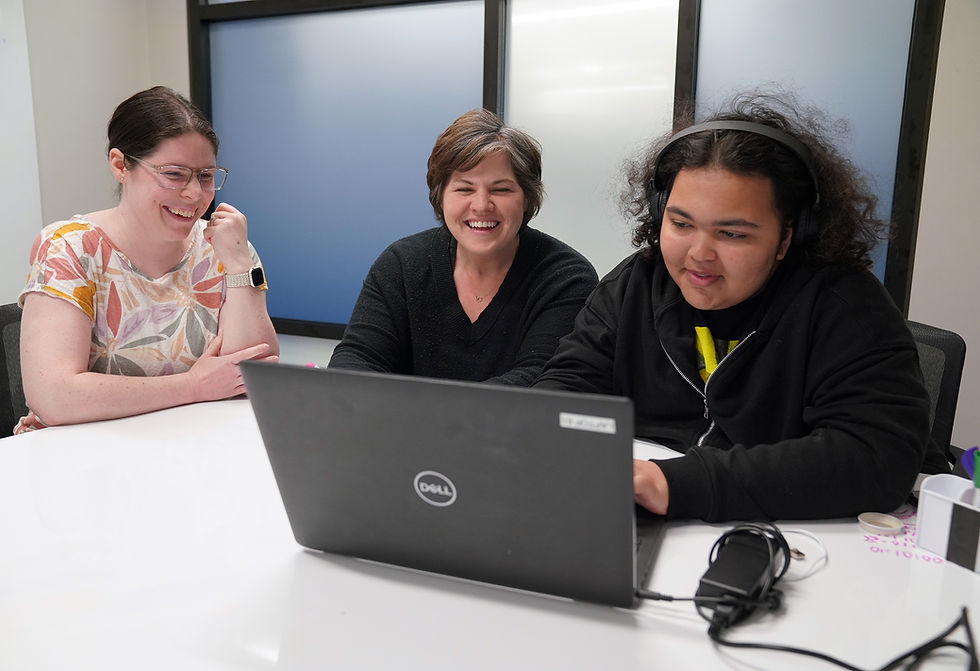Summer | 2025
HOW WIOA FUNDING OPENS DOORS AT SANDBURG
“We’re finding lots of students who need extra support.”

For many potential students, the path to higher education is blocked by financial and personal challenges. At Sandburg, a powerful but often overlooked resource is helping to clear those obstacles: the Workforce Innovation and Opportunity Act (WIOA, pronounced “wee-oh-ah”).
Lauren Eurales, Sandburg’s career and technical education (CTE) transitions navigator, serves as a vital link between students and this life-changing program.
“We’re finding lots of students who need extra support,” said Eurales, who began her role in December. The newly created position focuses on connecting students with resources both on and off campus.
What is WIOA?
WIOA is a federally funded program that provides substantial financial assistance to eligible individuals pursuing education in high-demand career fields. For qualifying Sandburg students, the benefits are comprehensive:
• Full tuition payment
• Coverage for required textbooks
• Child care assistance
• Mileage reimbursement at the business rate (currently 70 cents per mile)
• The ability to use Pell Grant funds for other educational expenses
Who qualifies?
WIOA serves a broad range of individuals facing various challenges. Eligibility categories include:
• Low-income individuals
• Pregnant or parenting youth
• School dropouts or those not currently attending school
• Individuals with criminal records
• Homeless or runaway youth
• Those in foster care
• People with disabilities
• English language learners
• Veterans
• Individuals with basic skills deficits
• Dislocated workers who have lost their jobs
One important requirement is that applicants must be eligible to work in the United States. This means those with student visas but without work authorization may not qualify.
Career and Technical Education Programs
WIOA funding supports students in many of Sandburg’s CTE programs, which prepare students for immediate employment in high-demand fields.
“We have so many different programs for students,” Eurales said, “whether it’s a younger kid wanting to take some dual-credit classes in high school, a working adult who’s looking for some re-skilling or maybe even just wanting to take on a new career trajectory.”
Beyond Financial Support
What sets Sandburg’s approach apart is the comprehensive support system built around WIOA students. As the CTE transitions navigator, Eurales provides crucial wraparound services that address challenges beyond the classroom.
“If students find themselves in a predicament they weren’t expecting, they can stop by my office,” Eurales said.
She maintains an extensive database of community resources covering everything from food assistance to mental health services, crisis intervention, disability support, LGBTQIA+ services, transportation options and veterans resources. These services are also available for ICAPS students.
“Let’s say a student says, ‘My car broke down,’” Eurales said. “Then I can suggest that they should apply to the crisis grant program at Sandburg and see if they could get help with that. We collaborate together to help them.”
Getting Started
For individuals interested in exploring WIOA funding and services for use at Sandburg, the first step is contacting their local workforce office, which can be located by visiting the Service Finder at illinoisworknet.com.
The office will determine eligibility and guide applicants through the process. Meanwhile, Eurales stands ready to help students navigate the educational requirements and any life challenges that arise during their journey.
“It just helps that they have that personal relationship — someone that they can trust, that they know, they can reach out to,” Eurales said. “It definitely makes a difference.”
